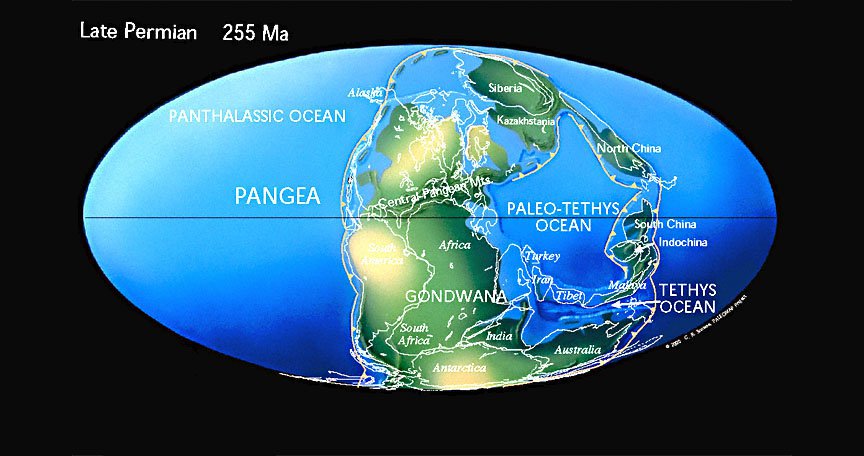
July 18, 2018
Research Highlight
Testing Molybdenum Isotopes as a Paleoredox Proxy

What the world looked like 250 million years ago.Image credit: Chris Scotese.
Researchers have provided a case study for the use of molybdenum isotopes as a proxy for ancient redox conditions. The team examined samples from Chaohu, China, which provide information about the Permian-Triassic Boundary (PTB). The PTB occurred roughly 252 million years ago and marks one of the largest mass extinctions in Earth’s history. Often referred to as the ‘Great Dying,’ it is estimated that up to 96% of marine species and 70% of vertebrates on land went extinct during this time. By examining molybdenum isotopes in black to gray shales, the team evaluated their use as a proxy for paleoredox conditions.
The study, “Evaluation of paleomarine redox conditions using Mo-isotope data in low-[Mo] sediments: A case study from the Lower Triassic of South China,” was published in the journal Palaeogeography, Palaeoclimatology, Palaeoecology. The work was supported by NASA Astrobiology through the Exobiology Program.